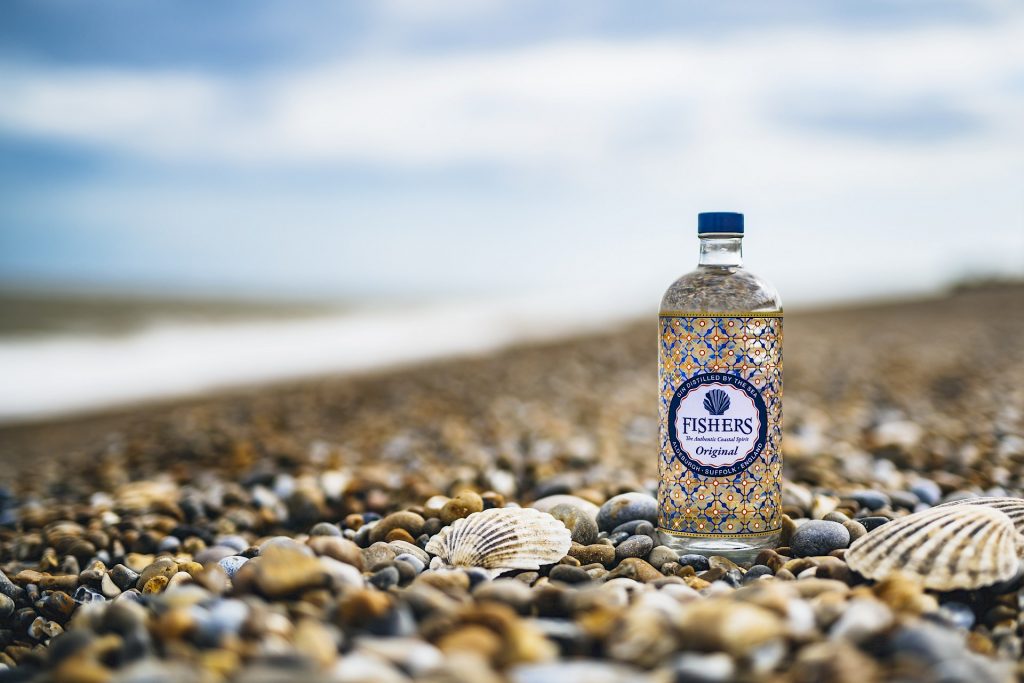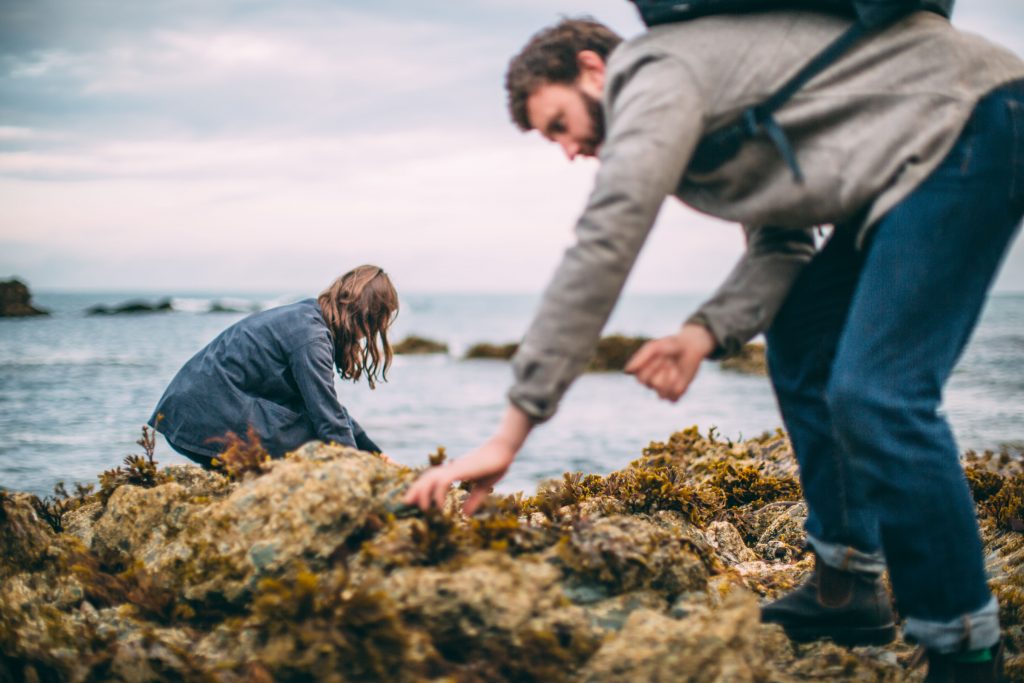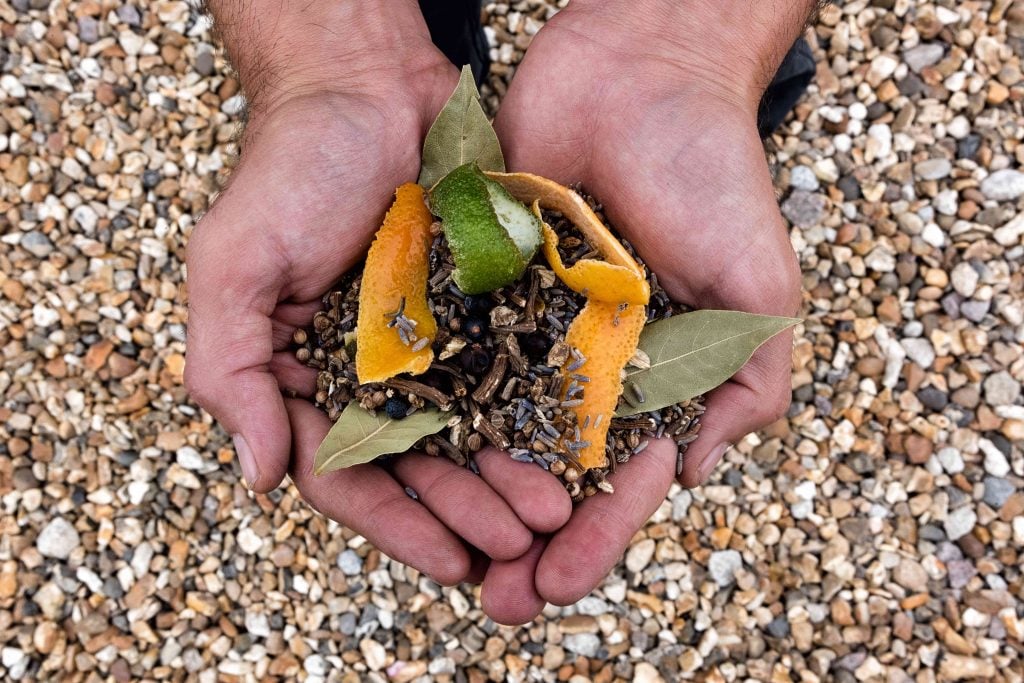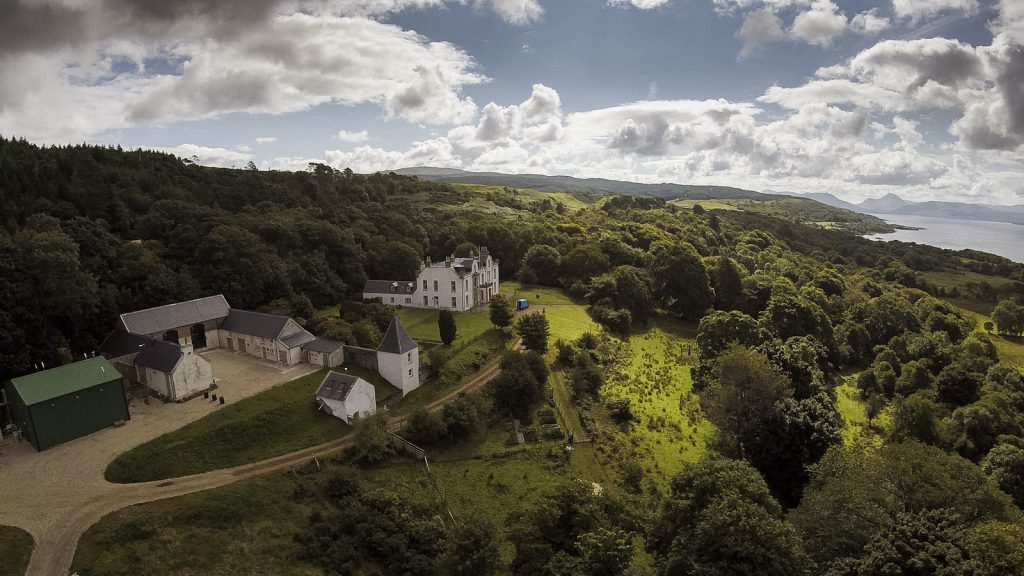From Cornish sea salt to Cotswolds lavender, distillers frequently utilise nature’s larder to bring a sense of place to their spirits. We speak with the brains behind a selection of botanical bottlings to discover how they captured the essence of their local area …
Distillers have a long history of flavouring their spirits with locally-sourced botanicals. This was mostly out of necessity rather than creativity in the early days of booze-making – 16th century producers could hardly nip down to B&Q and buy the seeds of some exotic fruit to flavour their eye-watering new-make – but today, distilling a botanical sense of place is a labour of love that requires time, know-how and patience. As such, MoM caught up with four spirited producers to chat about the native ingredients in their flagship recipes – here’s what they had to say:

She sells gin on the sea shore
Fishers Distillery
The spirit: Fishers Gin
Suffolk-made Fishers combines foraged local herbs and coastal botanicals to create a gin inspired by the Aldeburgh marshes on the River Alde, next to the North Sea – as founder Andrew Heald explains.
“I wanted to capture what I love about this area in a bottle,” he says. “Part of this was using native and saline botanicals that grow in abundance on the Suffolk coast, but also introducing some wider coastal and British flavours that would help reflect the character of the area.”
Collecting and processing these ingredients can be time-consuming. For example, when handling wood avens – a perennial plant in the rose family – the Fishers team are interested in the fine roots. This involves a lot of care, says Heald, to brush away as much earth as possible.
“Native marsh samphire and bog myrtle have a short harvesting window and we need to freeze them immediately,” he continues. “Spignel, which we grow ourselves, takes three years to develop at the root; therefore it takes a lot of careful planning and forecasting.”
While head distiller Ben Bewley relishes time spent “harvesting samphire on a sunny day by the river”, he says that from a distillers’ perspective, spignel is the most rewarding botanical to work with.
“It has incredibly complex flavours and aromas that all add up to a very potent ingredient,” he explains. “Get it right and you bring out its best, get it wrong and you overpower everything else to the detriment of the spirit. Perhaps it’s the part of me that likes the jeopardy and the reward of getting it right.”

Pentire people foraging for botanicals on the Cornish coast
Pentire Drinks
The ‘spirit’: Pentire Adrift
Made from sustainably sourced or organically grown plants native to the Cornish coastline – including rock samphire, sea purslane, sea fennel, sage, Cornish sea salt and sea rosemary – Pentire is a non-alcoholic botanical spirit with a maritime twist.
Finding inspiration for Pentire’s flavour profile was simple, says founder Alistair Frost. “Our local headlands boast a vast botanical range which provided us a perfect playground for trial and error,” he says. “This allowed us to push towards our flavour profile, which really is shaped by the local landscape.”
While they all play a key role in the overall mix, I ask if there are any botanicals Frost likes working with more than others. “That’s a tricky one, they all complement each other so well,” he says. “We can tell you which ones aren’t so ‘fun’, and that’s the majority of our key ingredients which are seasonal.”
While this provides challenges and a lot of forward-planning, it makes the journey all the more exciting, he says. “From a maker’s perspective, the biggest challenge has been to create complex layers of flavour, which has taken trial and error,” Frost adds. “However [it’s also] the most rewarding thing to get right, as our team’s perseverance has resulted in a delicious and natural-tasting liquid.”

Cotswolds gin botanicals
Cotswolds Distillery
The spirit: Cotswolds Dry Gin
This countryside-inspired London Dry bottling from Cotswolds Distillery – based in Staffordshire hamlet Stourton – combines nine carefully-chosen botanicals, including lavender from nearby Snowshill.
“We wanted to create a gin that was a reflection of where we are based in Stourton, in an Area of Outstanding Natural Beauty,” explains head distiller Nick Franchino. “We put about 10 times the average volume of botanicals used to make most premium gins in our copper pot still.
Juniper berries, coriander seed and angelica root are macerated for 24 hours in pure wheat spirit, with Cotswolds lavender, bay leaves, freshly-peeled lime, pink grapefruit zest, cardamom seed and black peppercorn added prior to distillation.
“This entails peeling several hundred limes and grapefruits per week by hand,” Franchino continues. “This process creates the richest possible flavours and mouthfeel due to the high proportion of essential oils and botanical extract. It’s tough work, but it is totally worth it for the vibrant flavours and rich mouthfeel that make our gin stand out from the crowd.”
As the distillery adds a new floral creation to its portfolio – No.1 Wildflower Gin, inspired by the Cotswolds’ wildflower-rich grasslands – I ask Franchino if there’s any part of the production process that’s particularly tricky to get right.
“Maintaining a consistent, high-quality product through the numerous seasons of botanicals,” he says. “They always present a few challenges and variances, and bringing them back in line can be a challenge – but it’s always good fun and brings a gin alive.”

Nc’nean: if you’re going to have a sense of place, make it a place like this
Nc’nean Distillery
The spirit: Nc’nean Botanical Spirit
Bridging the gap between gin and whisky, this bottling sees the new-make Nc’nean whisky combined with ten botanicals – many of them wild herbs and flowers that grow at the distillery – including bog myrtle, sorrel, heather and thyme.
“We went out with a local plant expert [@westhighlandherbal] and she helped us identify what grew locally, what the flavours might be and, also, what the plants were traditionally used for,” explains founder and CEO Annabel Thomas. “From there, we did six months of experimenting with flavours, trying to get a balanced spirit that reflected local botanicals but also tasted great.”
When it comes to botanicals, are there any Thomas favours above the rest? “I particularly love bog myrtle,” she says. “It is the biggest local botanical we use, we pick it all by hand, and I just think it is the most wonderful plant.
“It grows everywhere around the distillery – there are plenty of bogs! – and when you walk through fields of bog myrtle in the summer, you get this wonderful herby, citrusy aroma drifting up,” Thomas continues. “It is something I’ve been cooking with for years – I recommend using it to stuff a chicken – so the chance to distil with it was a dream.”
